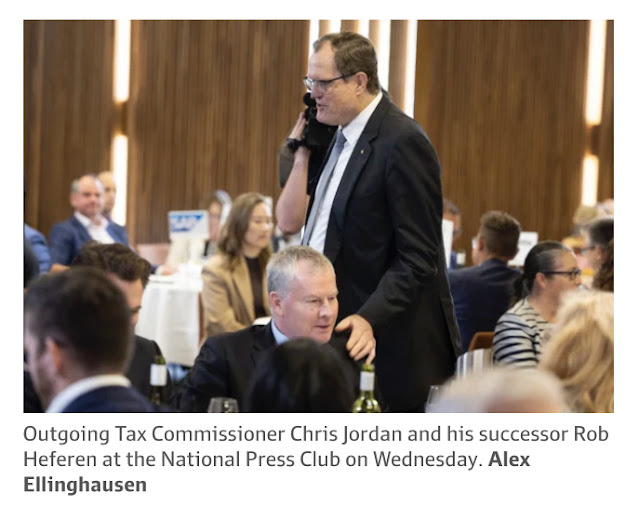“I’m sure most of us in this room like me just get the money taken out of your salary,” he said in response to a question following his final speech to the National Press Club in Canberra on Wednesday.
In an earlier interview with The Australian Financial Review to mark his 80th birthday, Mr Keating said a top marginal rate higher than 39 per cent was “confiscatory” and he backed indexation of the personal tax scales to inflation or wage rises. “There’s an issue that all societies should have of how much a person’s conscientious efforts and wealth should be delivered to the state,” the former Labor prime minister and treasurer said.
Treasurer Jim Chalmers, who wrote his PhD thesis on Mr Keating, said he respected the former prime minister but had different priorities by giving a tax cut to more middle-income taxpayers.
Scope for tax rate trade-off
“Aspiration isn’t limited to the people who are already doing relatively well,” Dr Chalmers said on Wednesday.
The top 47 per cent rate, including 2 per cent Medicare levy, will apply to incomes above $190,000 from July. All taxpayers will have the bottom rate cut from 19 per cent to 16 per cent.
Former Treasury official Robert Carling said lower marginal tax rates would boost work incentives and small business investment, help attract international talent and discourage tax planning conducted via negative gearing, trusts and incorporation.
“The weight of income tax is far too high,” said Mr Carling, now a senior fellow at the Centre for Independent Studies.
“There is certainly scope for a trade-off between lower marginal rates and the [50 per cent] capital gains tax discount [to make it less generous].
“Indexation makes the tax system more honest because bracket creep and periodic tax cuts are a sham.”
If it had been indexed to wages, the top threshold would now be more than $260,000. Labor plans to lift it to $190,000 from July, lower than the Coalition’s legislated $200,000.
Tax policy specialist Steven Hamilton said that tax avoidance and evasion meant the top tax rate should be lower than otherwise.
“But that’s true of all taxes,” Mr Hamilton said. “The question is not whether a tax is ‘bad’, because all taxes are bad; the question is: how bad? That is an empirical question.
“Experts worldwide have generated massive amounts of credible evidence on this question. And the conclusion is that these responses are real but fairly modest, and they clearly support a top tax rate of greater than the 39 per cent limit Keating nominates.
“I’m not at all worried by the current top tax rate of 45 per cent, though I’d like to see the threshold [$180,000, due to rise to $190,000 in July] at which it kicks in raised fairly substantially.”
Five Eyes income thresholds
Australia’s maximum 47 per cent rate is 8 percentage points higher than New Zealand (39 per cent), about 5 percentage points above the US (a figure which includes an estimated average state income tax) and 2 percentage points higher than the UK.
The income threshold at which the top tax rate is imposed is less generous here than Canada ($278,000), the UK ($240,000) and US ($880,000) in currency-adjusted, Australian-dollar terms.
NZ’s top threshold is about $170,000 in Australian dollar terms ($NZ180,000), but the maximum Kiwi rate is lower at 39 per cent.
Australia is among the cohort of 21 OECD countries that does not index tax brackets for inflation. Seventeen OECD countries automatically adjust their brackets to compensate for higher prices.
Increasing the taxable income thresholds annually in line with the RBA’s inflation target of 2.5 per cent would deliver some financial relief, help the central bank manage inflation and take away some of the “political” decisions on tax cuts, Dr Ellis said.




